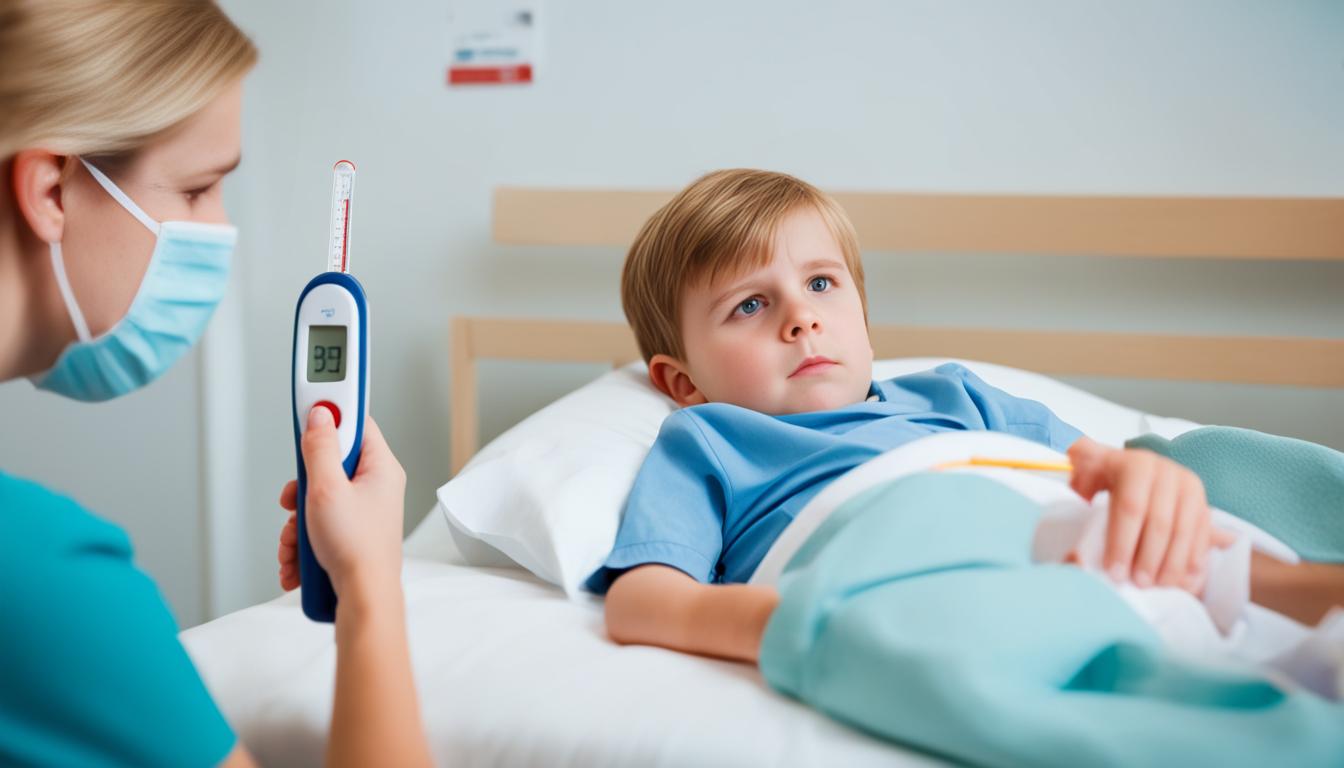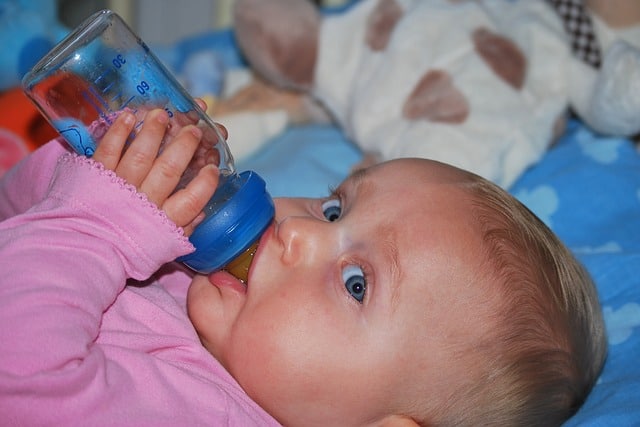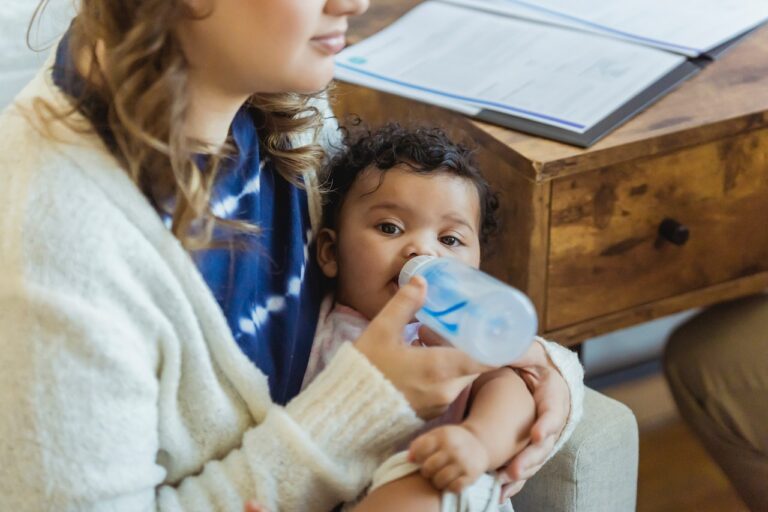When to Seek Hospital Care for Your Child: Understanding How High a Fever Should Be
Fevers in children can cause worry for parents, but it’s important to understand when a high fever requires a trip to the hospital. For children older than 3 months who are otherwise healthy, a fever is usually a normal response to infection and can be managed at home. However, for infants younger than 3 months and children with underlying health conditions, a high fever may be a sign of a more serious infection and should be evaluated by a doctor. It’s crucial to know the signs of a high fever in a child and when to take action to ensure their safety and health.
Key Takeaways:
- Fevers in children older than 3 months who are otherwise healthy can usually be managed at home.
- Infants younger than 3 months and children with underlying health conditions should be evaluated by a doctor if they have a high fever.
- Understanding the signs of a high fever in a child is crucial for knowing when to seek medical care.
- Febrile seizures, although scary, are usually not a cause for major concern.
- During the COVID-19 pandemic, a persistent fever in a child may require medical attention to rule out multisystem inflammatory syndrome.
Understanding Fever in Children
A fever is the body’s natural response to infection, signaling that the immune system is actively fighting off viruses or bacteria. In children, fevers are often caused by viral infections, such as the common cold or flu. While fevers can be unsettling for parents, it’s important to remember that most of the time, they are not dangerous and can be managed at home.
The threshold for a fever is typically a temperature equal to or greater than 100.4 degrees Fahrenheit or 38 degrees Celsius. It’s important to note that the number on the thermometer alone isn’t always an indicator of when a fever is considered too high for a child. Other factors, such as the child’s age, overall well-being, and accompanying symptoms, should be taken into consideration when deciding whether medical attention is necessary.
When your child has a fever, it’s crucial to monitor them for any signs of distress or worsening symptoms. Pay attention to other potential red flags, such as:
- Extreme lethargy or irritability
- Difficulty breathing
- Development of rashes
- Localized pain or swelling
- Severely decreased urination
If your child experiences any of these symptoms along with a high fever, it may be an indication of a more serious underlying infection. In such cases, seeking medical help is recommended.
“It’s important to remember that while fevers can be uncomfortable, they are generally a sign that the body’s immune system is doing its job in fighting off an infection. Trust your instincts as a parent, and if you’re concerned about your child’s fever, don’t hesitate to reach out to a healthcare professional for guidance.”
Remember, each child is unique, and what might be considered a high fever for one child may not be cause for concern in another. Trusting your instincts as a parent and consulting with a healthcare professional when needed is key to ensuring your child’s well-being.
Coming up next, we’ll explore the symptoms that warrant immediate medical attention when it comes to fevers in children. Stay tuned!
Recognizing Serious Fever Symptoms in Children
While most fevers in children are not cause for concern, there are certain symptoms that warrant medical attention. If your child has a high fever that lasts longer than three days, exhibits extreme sleepiness or irritability, has trouble breathing, develops rashes, experiences localized pain or swelling, is drinking very little or not at all, has severely decreased urination, or has a seizure, it is important to seek medical help. These symptoms may indicate a more serious underlying condition that requires immediate attention. Trust your instincts as a parent and call a doctor if you feel that something is not right.
When to Seek Medical Help for a Child’s High Fever
It can be difficult to determine when a high fever requires medical attention. Here are some guidelines to help you make the right decision:
- If your child is younger than 3 months old and has a rectal temperature of 100.4°F (38°C) or higher, seek immediate medical care.
- If your child is between 3 months and 3 years old and has a rectal temperature of 102°F (39°C) or higher, call your pediatrician for advice.
- If your child is 3 years or older and has a temperature of 102°F (39°C) or higher that persists for more than 48 hours or is accompanied by other concerning symptoms, contact your healthcare provider.
“It’s important to remember that as a parent, you know your child best. If you’re worried about their fever or any associated symptoms, don’t hesitate to reach out to a medical professional. They can provide the guidance and care needed to ensure your child’s health and well-being.”
Dispelling Myths About Fever in Children

When it comes to fever in children, there are several common myths that need to be debunked. It’s important to have accurate information to ensure the well-being of your child. Let’s take a look at these myths and separate fact from fiction.
Myth 1: High fever can cause seizures and brain damage
Many parents worry that a high fever can lead to seizures and brain damage in their children. However, this is simply not true. High fevers do not cause brain damage, and seizures induced by fever, known as febrile seizures, are rare and usually harmless. While febrile seizures can be frightening to witness, they typically do not result in long-term negative effects. It’s important to stay calm and seek medical attention if necessary.
Myth 2: Temperature is the most important factor to consider
Another misconception is that the temperature itself is the most important factor when evaluating a child’s fever. In reality, it’s crucial to look beyond the temperature and consider other symptoms and the overall well-being of the child. While a high temperature may be concerning, it is not always indicative of a serious condition. Instead of obsessing over the number on the thermometer, pay attention to your child’s behavior, hydration, and other symptoms. Trust your instincts as a parent and seek medical help if you’re unsure or notice any alarming signs.
| Myth | Fact |
|---|---|
| High fever causes brain damage | High fevers do not cause brain damage |
| Temperature is the most important factor | Other symptoms and overall well-being are also crucial |
“It’s important to have accurate information about fever in children to ensure their well-being. Don’t let common myths cloud your judgment and always consult a healthcare professional if you have any concerns.”
By dispelling these myths and understanding the facts, you can approach your child’s fever with confidence and make informed decisions about their care. Remember, it’s always better to err on the side of caution and seek medical help if you have any doubts about your child’s health.
How to Manage a Fever at Home

Most fevers in children can be managed at home without medical intervention. If you suspect your child has a fever, you can usually tell just by touch. However, it’s always a good idea to confirm the temperature using a thermometer for accuracy.
Here are some self-care tips to help manage your child’s fever:
- Dress them appropriately: Dress your child in light clothing to promote heat dissipation and allow the body to cool down naturally.
- Cool washcloth: Apply a cool washcloth to their forehead to provide comfort and help lower their body temperature.
- Rest: Ensure your child gets plenty of rest and avoid strenuous activities that may increase their body temperature.
- Hydration is key: Encourage your child to drink fluids such as water or electrolyte-rich drinks to prevent dehydration and help regulate body temperature.
In some cases, fever-reducing medications may be necessary to alleviate discomfort. Acetaminophen and ibuprofen are commonly used and effective for managing fever in children. However, it’s important to use these medications according to the correct dosage instructions and not to alternate between them without medical advice.
Remember, while managing a fever at home is often sufficient, it’s essential to monitor your child’s symptoms and seek medical attention if their condition worsens or if you have any concerns.
Understanding Fever and Seizures in Children
Febrile seizures, or seizures that occur during a fever, can be a frightening experience for parents. However, it’s important to know that most febrile seizures are brief and do not cause any long-term harm to the child.
Febrile seizures are more common in children under the age of 5, particularly those who have a family history of seizures. They usually occur as a result of a rapid rise in body temperature during a fever.
If your child experiences a febrile seizure, it’s essential to stay calm and take the following steps:
- Place your child on their side to prevent choking on saliva or vomit.
- Do not put anything in their mouth, as it can cause injury.
- Remove any nearby objects that could be potentially dangerous.
- Call for medical help if the seizure lasts longer than five minutes or if your child has difficulty breathing afterwards.
It’s important to remember that febrile seizures themselves are not an indication of a serious underlying condition. They are generally considered harmless and unlikely to cause any long-term problems.
Fever and Seizure Prevention
While febrile seizures cannot be completely prevented, there are steps you can take to reduce the risk:
- Ensure your child receives all recommended vaccinations to protect against infections that can cause fevers.
- Keep your child’s temperature under control by appropriately managing their fever with fever-reducing medications, as advised by their healthcare provider.
- Dress your child in light, breathable clothing to regulate body temperature.
- Encourage your child to stay well-hydrated to prevent dehydration, which can contribute to fever spikes.
Remember, if your child experiences a febrile seizure, it can be frightening but usually harmless. Stay calm, keep them safe, and seek medical help if necessary. Most importantly, trust your instincts as a parent and reach out to your healthcare provider if you have any concerns.
Fever and COVID-19 in Children
As the COVID-19 pandemic continues, it is crucial to understand the connection between fever and the virus when it comes to children. Fever is a common symptom of COVID-19 in children, alongside other symptoms such as a runny nose, cough, and gastrointestinal issues. However, it’s important to note that fever can also be associated with a rare but serious condition known as multisystem inflammatory syndrome in children (MIS-C).
If your child has a fever for more than four or five days, especially if accompanied by additional symptoms like a rash or abdominal pain, it is essential to seek medical attention to rule out MIS-C. While MIS-C is rare, prompt evaluation and treatment are crucial to ensure the child’s health and safety.
By staying informed about the relationship between fever and COVID-19 in children, parents can take the necessary precautions and seek medical help when needed. Keep a close eye on your child’s symptoms and reach out to a healthcare professional if you have any concerns. Remember, early detection and intervention can make a significant difference in managing fevers and related conditions.
FAQ
How high of a fever should I take my child to the hospital?
For children older than 3 months who are otherwise healthy, a fever is usually a normal response to infection and can be managed at home. However, for infants younger than 3 months and children with underlying health conditions, a high fever may be a sign of a more serious infection and should be evaluated by a doctor.
What are the signs of a high fever in a child?
Signs of a high fever in a child include extreme sleepiness or irritability, trouble breathing, rashes, localized pain or swelling, drinking very little or not at all, severely decreased urination, and seizures.
When should I seek medical help for my child’s high fever?
If your child has a high fever that lasts longer than three days, exhibits extreme sleepiness or irritability, has trouble breathing, develops rashes, experiences localized pain or swelling, is drinking very little or not at all, has severely decreased urination, or has a seizure, it is important to seek medical help.
Are high fevers dangerous for children?
While high fevers can be concerning, they usually do not cause brain damage or harm to children. However, it’s important to pay attention to other symptoms and overall well-being of the child to determine if medical attention is necessary.
How can I manage my child’s fever at home?
You can manage your child’s fever at home by dressing them in light clothing, applying a cool washcloth to their forehead, ensuring they get plenty of rest, encouraging them to drink fluids to prevent dehydration, and using fever-reducing medications like acetaminophen or ibuprofen if necessary.
What should I do if my child experiences a seizure during a fever?
If your child experiences a seizure during a fever, place them on their side, do not put anything in their mouth, and call for medical help if the seizure lasts longer than five minutes. Febrile seizures do not indicate a serious underlying condition and are usually not a cause for major concern.
Is fever a symptom of COVID-19 in children?
Yes, fever is one of the common symptoms of COVID-19 in children, along with other symptoms like runny nose, cough, and gastrointestinal issues. It is important to seek medical attention if a child has a fever for more than four or five days, especially if accompanied by other symptoms like a rash or abdominal pain, to rule out multisystem inflammatory syndrome in children (MIS-C).









